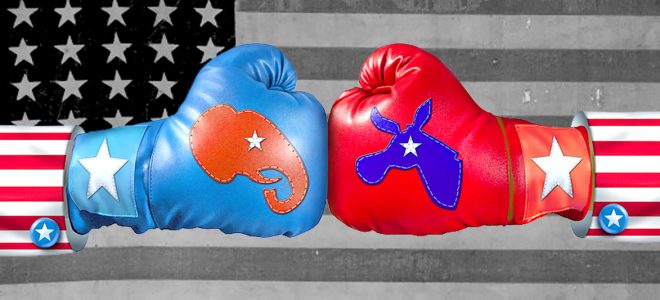

Cornell W. Clayton is the Director of the Thomas S. Foley Institute at Washington State University, where he also serves as the Thomas S. Foley Distinguished Professor of Government. He has written extensively on American government and politics, and recently coedited Civility and American Democracy: A Reasonable Understanding.
How concerned should we be about the health of our democracy?
Former Secretary of State and first lady of the United States, Hillary Clinton, is “a bigot” and “world class liar” who “should be locked up,” according to Republican presidential nominee Donald Trump. Yet Trump is supported by a “basket full of deplorables” and running a campaign around “prejudice, paranoia, and taking hate mainstream.” Senator Ted Cruz (R-TX) thinks Trump is a “sniveling coward” and an “amoral, sociopathic narcissist.” But it turns out “Lying Ted” can’t be trusted either; he is nothing more than a “big cheater”, “a liar”, and, “let’s face it, a real basket case,” according to Trump. Senator Marco Rubio (R-FL), believes Trump is a “fraud” and a “con man” with little hands and Senator Lindsay Graham (R-SC) bluntly calls him “a complete Jackass.” Yet how credible is “Little Marco,” who is a “clown,” or Graham, a “total stiff,” as Trump reminded us before sharing Graham’s personal cell phone number on national television. Oh yes, Meghan Kelly, the otherwise respected anchor on FOX News, she has “blood coming out of wherever…”
No wonder a recent CNN headline called this “The worst election, ever.” The Washington Post opined that the “campaign is on track to be the crudest, most vulgar and most thoroughly disgusting in our nation’s history… a new low in political discourse.”
Even before the 2016 campaign was in full swing, a poll found that 95 percent of Americans believed incivility in politics is an important problem. Three-quarters (74 percent) think civility has dramatically declined in recent years, and 70 percent believe the state of civil discourse is now at a “crisis level” threatening American democracy.
A BRIEF HISTORY OF INCIVILITY
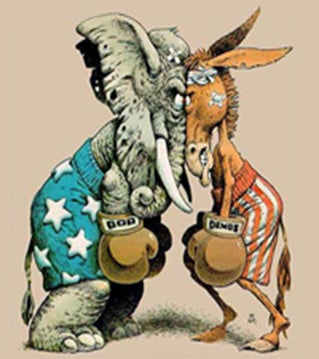
It may be little comfort to know that as bad as the level of civil discourse is today, it has been worse, much worse, in the past. Even a brief history of American partisan politics illustrates how it has often ignored what Lincoln once called “the better angels of our nature” in order to peddle to more base, vulgar and angry instincts.
Take the election of 1800, which was probably the nastiest in history. Partisan newspapers during the campaign called John Adams “a hideous hermaphroditical character, with neither the force and firmness of a man, nor the gentleness and sensibility of a woman.” Thomas Jefferson, they opined, was “a mean-spirited, low-lived fellow, the son of a half-breed Indian squaw,” and if elected “murder, robbery, rape, adultery and incest will be openly taught and practiced.” The campaign was so ugly that Adams and Jefferson, close friends during the Revolutionary War, refused to speak to each other for more than 20 years after the election. Two other political rivals of that time, Alexander Hamilton and Aaron Burr, became so enraged at each other that they engaged in a duel, and Hamilton was shot dead.
During the presidential election in 1828, Andrew Jackson was accused by opponents of murder and adultery. He was called “Andrew Jackass” so frequently he adopted the moniker himself, which is why the Democratic Party is symbolized by a donkey to this day. In response, Jackson’s supporters called John Quincy Adams a tyrant and a “pimp.” The latter accusation, stemming from when Adams was U.S. Ambassador in Russia and allegedly procured “American virgins” for the Russian Czar, was untrue but that did not deter his political enemies from repeating it.
Of course, the Civil War was the most uncivil and violent period in American history. Even before the war politics was unruly. The “Know Nothing” Party in the 1850s was openly racist and bigoted, advocating violence against Catholics, Irish and Italian immigrants, and others. In 1856, Congressman Preston Brooks of South Carolina was so angered by an anti-slavery speech given by Senator Charles Sumner of Massachusetts that he took to the Senate floor and beat Sumner unconscious with his cane. President Lincoln was attacked in the most venomous ways, not just in the South but also by Copperhead press in the North. One Wisconsin newspaper editorialized that “Mr. Lincoln is fungus from the corrupt womb of bigotry and fanaticism… The man who votes for Lincoln now is a traitor and murderer… if he is elected to misgovern for another four years, we trust some bold hand will pierce his heart with dagger point for the public good.” Lincoln was assassinated. The Civil War, which the military theorist Clausewitz reminds us is politics by other means, led to 625,000 casualties, 2 percent of the entire US population.
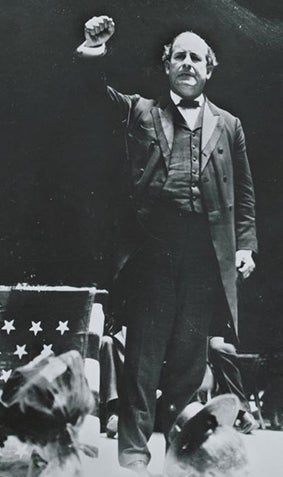
During the 1890s, American politics again took a turn for the worse. Democratic presidential candidate William Jennings Bryan was portrayed by his adversaries as an unhinged religious fanatic and a self-righteous zealot. His opponent, William McKinley, was derided as a stooge of corporate power. After he was reelected in 1900, McKinley was assassinated by an unemployed steel worker who blamed the Republican Party for the loss of his job during the panic of 1893.
During the 1930s, Franklin Roosevelt’s political opponents called him a “communist,” a “fascist,” a “dictator” and worse. Father Charles Coughlin, the forerunner of today’s bombastic radio talk show hosts, used his national radio program to inveigh against the president, whom he called a “liar” and “traitor to the country,” using anti-Semitic slurs to attack the president’s administration.
Many of us alive today remember the 1960s. That decade began with violence directed toward peaceful civil rights protesters in the South and ended with violent anti-war protests at college campuses like Kent State where students were shot by members of the National Guard. The 1968 Democratic National Convention in Chicago devolved into violent riots where dozens were seriously injured and taken to the hospital. Political parties like the Black Panthers became militarized, and three towering political figures of the twentieth century – John F. Kennedy, Martin Luther King and Robert Kennedy – all were assassinated.
POLITICAL DIVISION AND THE CAUSES OF INCIVILITY
Are we less civil today than these previous periods? Certainly not. But those were not normal periods in political history either. Each of those moments represented a critical juncture in the development of American democracy, marked by what political scientist Walter Dean Burnham termed critical election periods; periods in which the political party system is permanently transformed by the emergence of new parties and the collapse or fundamental alteration of existing ones (i.e. the Jeffersonian Republican Party in 1800; the Democratic Party in the 1820s; the Republican Party in the 1850s; the Populist and Progressive parties in the 1890s; the New Deal Democratic Party in the 1930s; and the New Right Republican Party after the 1960s).
These periods are also associated with mass social movements and conflicts over enfranchisement of new groups of Americans (e.g. those without property during the Jacksonian era; newly freed slaves in the 1860s; women’s suffrage and rights for working class immigrants at the turn of the twentieth century; and the fight for more complete inclusion of minorities and women in American public life during the civil rights movement in the 1960s). In other words, these are all periods when our society was deeply divided and the issues splitting the electorate called into question the very terms of citizenship and what it meant to be “American.”
When understood in historical context it becomes clear that incivility in political discourse is a symptom, rather than a cause, of deep divisions in society. Whatever the individual virtues of civil behavior, suggesting that Americans will solve their political problems if we would just be nicer to each other confuses that causality. We are uncivil because we are deeply divided, not the other way around. In her book Rude Democracy Susan Herbst reminds us that the natural byproduct of conflict resolution in democratic societies is criticism, negativity, and even rudeness. The deeper the divisions, the more intense and passionate the debate.
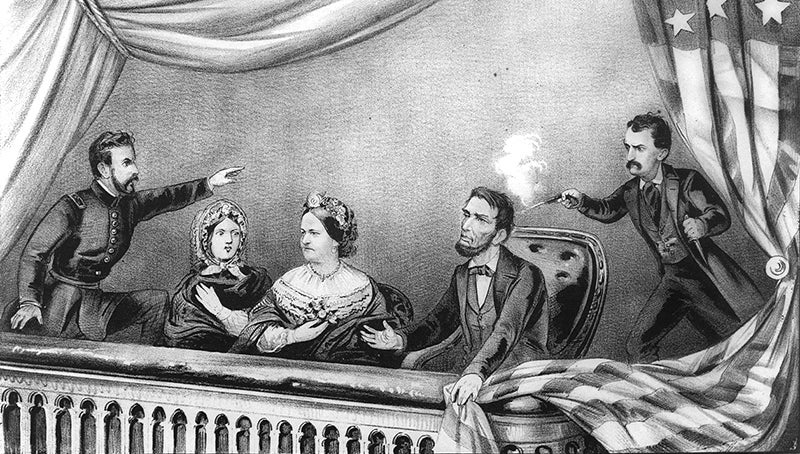
PARTISAN DIVISIONS TODAY
So how are we divided today? Recent political research focuses on three areas of partisan division in the US. First, a group of political scientists led by led by Nolan McCarty at Princeton University has analyzed roll call votes taken in Congress going back to the beginning of our nation. Their research found that elected elites are more polarized today than at any point since the 1870s, or since we have had the two parties that exist today. Specifically, they found that since the 1980s, both Republican and Democratic members of Congress have moved away from the center and toward the ideological extremes when voting on legislation. This ideological polarization brought a halt to bipartisan lawmaking. Indeed, members of Congress today are less likely to vote across partisan lines, Democrats with Republicans and vice-versa, than at any point since two political parties have been in existence.
Secondly, political scientist Matthew Levendusky and others have found that our elected elites and the mass public have sorted themselves into ideologically homogenous, tribe-like parties. This seems normal to us today, but it was not always the case. Even in the recent past, both parties contained liberals and conservatives within their ranks: The generally liberal Democratic Party included a large number of southern conservative “Dixiecrats” who were more conservative than most Republicans, while the generally conservative GOP included a liberal northeastern “Rockefeller Republican” wing that was more liberal than many Democrats. The ideologically heterogeneous nature of the parties made it easier for voters to split their tickets and easier for members of Congress to work across party lines to pass major legislation. Beginning in the late-1960s, however, voters began sorting themselves. Conservatives migrated into the Republican Party and liberals into the Democratic Party. Today the parties are fully sorted and ideologically homogenous.
The ideological sorting of the parties not only makes bipartisan lawmaking more difficult, it also leads to affective polarization among the public. Studies have shown that as voters sort themselves into ideologically like-minded parties the effect of group psychology takes over and the levels of trust and affect that partisans feel towards each other declines. A recent PEW study, for instance, found that fully 66 percent of conservative Republicans and 50 percent of liberal Democrats now see the other party as not just wrong in their policy views, but as posing “a threat to the nation’s well-being.” Moreover, research by Lilliana Mason demonstrates that once parties are ideologically sorted, the influence of group psychology leads us to fear and loath the other party even when we do not disagree that much over the substance of policy.
A final area of research has focused less on how deeply divided the electorate is and instead on how closely divided it is. Since the 1980s, the electorate has been more evenly divided, for a longer period of time, than ever in American history. To put this into context one must realize that throughout most of American history national elections were decided by margins of fifteen or even twenty percent of the popular vote. Since 1984, however, no president has won an election by a margin of more than eight percentage points, and most of these elections were much closer. In 2000, for the first time in more than a century, the candidate who won in the Electoral College actually lost the popular vote.
The hyper-competitiveness of elections is not just at the presidential level. Frances Lee calculated the difference in the total number of votes cast for all candidates, Democratic and Republican, in all contests for federal offices – presidency, House and Senate races – going back to the 1860s, and found that the last three decades stand out. The difference in the total number of votes cast for all Democratic candidates versus all Republicans since the 1980s is less than two percent. In other words, elections for all federal offices over the past three decades have been decided by an average of less than two percentage points. The only other time our politics was so closely split was in the 1880s, when the electorate was also closely divided but for only for about one decade.
The close margins in elections has produced chronic divided government in the United States. In fact, in 28 of the last 36 years since 1980, one party has controlled the presidency and the other has controlled one or both houses of Congress. The effect of divided partisan control of government, when combined with polarization of the parties, is policy gridlock. Neither party can implement its policy agenda because the other party can utilize the checks and balances of our constitutional system to prevent it. Instead, both parties engage in tactics associated with the “permanent campaign” in which political leaders focus less on governing and more on partisan posturing aimed at gaining advantage in the next election. This, more than polarization itself, is what frustrates so many Americans with Washington, D.C. these days.
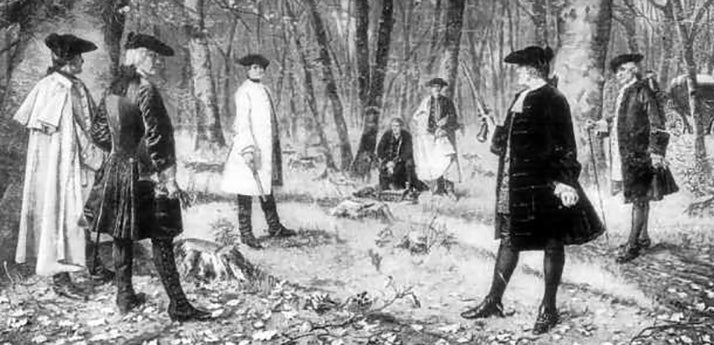
WHAT DOES IT MEAN?
When the electorate is deeply divided, sorted into tribe-like partisan teams, and also closely divided, the stakes grow. Consider two recent elections. If a few thousand votes in Florida during the 2000 presidential election (out of the more than 105 million votes cast) had gone the other way, George W. Bush would not have been president and the United States would not have gone to war in Iraq. Similarly, if a few thousand votes had gone the other way in any of several close Senate races in 2008, Democrats would not have held the 60-seat Senate majority necessary to pass the Affordable Care Act (Obamacare). The point is not to argue that the Iraq war or Obamacare were good or bad policy decisions. They were however momentous policy decisions that will shape American society for a generation or more, and they were decided by relatively few votes.
Given the nature of our divisions, it is hardly irrational for Americans today to feel passionate and vehement about politics. They accurately perceive there is a lot at stake in elections, and it is not surprising that they become fearful or angry when these do not turn out the way they hoped. From there it is a short step to demonizing the other side and resorting to the apocalyptic arguments that have come to mark so much of our political debates.
Styles of political discourse however are never far removed from the substantive cleavages that divide the public. During periods when there is consensus about the general scope and purposes of government, political debates are civil and courteous because they focus on technical questions of policy, how best to achieve agreed upon ends. During periods of deeper conflict, however, political discourse will necessarily move beyond technical questions toward deeper questions of political motivation and social identities. These are critical periods in democratic self-governance and they understandably provoke emotional reactions.
Today’s partisan divisions reflect a number of major policy challenges over which Americans are divided. Globalization of markets and trade, for example, has fundamentally transformed the economy, changing the way we work, earn livelihoods and provide for our families. Many Americans have prospered in the new economy, but others have been left behind in an economy that no longer rewards low-skilled jobs. How we think about that problem matters a great deal. Most recognize that globalization has had both positive and negative consequences, but how to respond to them remains deeply divisive. Research by Paul Pierson and Jacob Hacker and others show that these issues are intimately related to what they call a winner-take-all style of politics that both reflects and produces the partisan polarization described above.
So too does it matter how we think about the related problems of growing inequality in income and wealth in America. More than a decade ago the American Political Science Association issued a report that found we are in the midst of a new Gilded Age, with income and wealth more unevenly distributed than any time in more than a century. This level of inequality over time will have dire consequences for American democracy. Again, while most Americans recognize there is a problem, they disagree over what to do about it. Research by such political scientists like Larry Bartels at Princeton, and McCarty, Poole and Rosenthal, demonstrate that this conflict also reflects and produces polarization of our political parties.
The United States is also undergoing rapid demographic change as a result of immigration. There is now a larger percentage of foreign-born Americans than at any time in more than a century. Immigrants bring dynamism to the economy and culture but also transform the complexion of America, raising deep questions about cultural identity, assimilation, and citizenship. Again, research by McCarty, Poole and Rosenthal and others demonstrates that this issue reflects and produces partisan polarization.
There are other substantive policy disputes dividing the nation, such as the war on terror and America’s place in the world, climate change and debates over energy, problems connected to privacy and security in the digital age, to name a few. The roles they play varies, but substantive policy divides, rather than personalities and styles of discourse, are the wellsprings of partisan division. While a more respectful tone might make us less cynical about today’s politicians, it will not itself reduce partisan polarization or resolve these deeper conflicts. For this we must focus less on the method of debate and more on the substance of our disagreements.
If we place today’s raucous political behavior into historical context, we will see that it is less the result of a general decline in civility and manners than it is part of the cyclical process of democratic self-governance. Democracy is about conflict; the deeper the divisions, the more unruly the debate. If passions spill over into violence, threats or other efforts to exclude voices from our democratic process, then we have cause to worry. But passionate, rude, even angry argument, while usually ineffective as a tactic for persuading fellow citizens, is less a threat to democracy than it is a byproduct of democratic conflict resolution. It is an indication that the country is deeply divided over important challenges. So we would do well to focus more of our attention on these and a little less on the style of our political discourse.